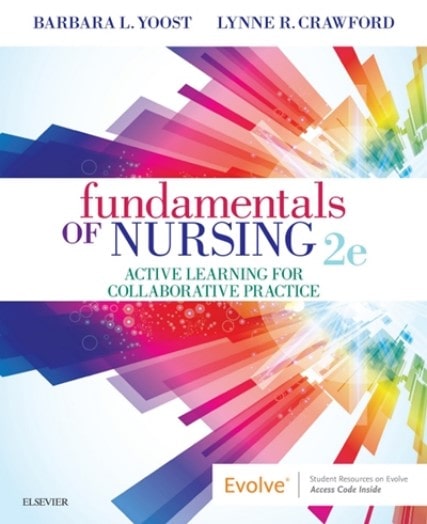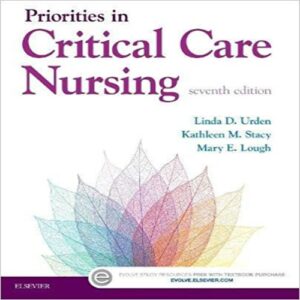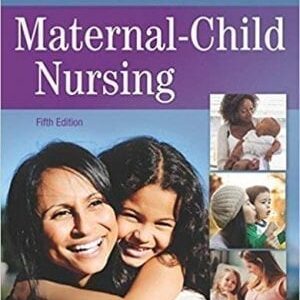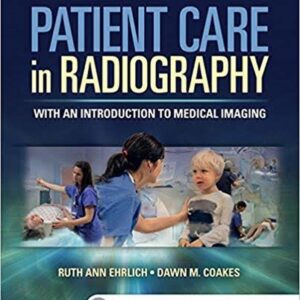Test Bank For Fundamentals of Nursing 2nd Edition By Yoost
Chapter 01: Nursing, Theory, and Professional Practice
MULTIPLE CHOICE
1. A group of nursing students are discussing the impact of nonnursing theories in clinical
practice. The students would be correct if they chose which theory to prioritize patient care?
a. Erikson’s Psychosocial Theory
b. Paul’s Critical-Thinking Theory
c. Maslow’s Hierarchy of Needs
d. Rosenstock’s Health Belief Model
ANS: C
Maslow’s hierarchy of needs specifies the psychological and physiologic factors that affect
each person’s physical and mental health. The nurse’s understanding of these factors helps
with formulating Nursing diagnoses that address the patient’s needs and values to prioritize
care. Erikson’s Psychosocial Theory of Development and Socialization is based on
individuals’ interacting and learning about their world. Nurses use concepts of developmental
theory to critically think in providing care for their patients at various stages of their lives.
Rosenstock (1974) developed the psychological Health Belief Model. The model addresses
possible reasons for why a patient may not comply with recommended health promotion
behaviors. This model is especially useful to nurses as they educate patients.
DIF: Remembering OBJ: 1.5 TOP: Planning
MSC: NCLEX Client Needs Category: Safe and Effective Care Environment: Management of Care
NOT: Concepts: Care Coordination
2. A nursing student is preparing study notes from a recent lecture in nursing history. The
student would credit Florence Nightingale for which definition of nursing?
a. The imbalance between the patient and the environment decreases the capacity for
health.
b. The nurse needs to focus on interpersonal processes between nurse and patient.
c. The nurse assists the patient with essential functions toward independence.
d. Human beings are interacting in continuous motion as energy fields.
ANS: A
Florence Nightingale’s (1860) concept of the environment emphasized prevention and clean
air, water, and housing. This theory states that the imbalance between the patient and the
environment decreases the capacity for health and does not allow for conservation of energy.
Hildegard Peplau (1952) focused on the roles played by the nurse and the interpersonal
process between a nurse and a patient. Virginia Henderson described the nurse’s role as
substitutive (doing for the person), supplementary (helping the person), or complementary
(working with the person), with the goal of independence for the patient. Martha Rogers
(1970) developed the Science of Unitary Human Beings. She stated that human beings and
their environments are interacting in continuous motion as infinite energy fields.
DIF: Understanding OBJ: 1.4 TOP: Planning
MSC: NCLEX Client Needs Category: Health Promotion and Maintenance
NOT: Concepts: Health Promotion
Fundamentals of Nursing 2nd Edition Yoost Test BankNU
3. The nurse identifies which nurse established the American Red Cross during the Civil War?
a. Dorothea Dix
b. Linda Richards
c. Lena Higbee
d. Clara Barton
ANS: D
Clara Barton practiced nursing in the Civil War and established the American Red Cross.
Dorothea Dix was the head of the U.S. Sanitary Commission, which was a forerunner of the
Army Nurse Corps. Linda Richards was America’s first trained nurse, graduating from
Boston’s Women’s Hospital in 1873, and Lena Higbee, superintendent of the U.S. Navy
Nurse Corps, was awarded the Navy Cross in 1918.
DIF: Remembering OBJ: 1.3 TOP: Assessment
MSC: NCLEX Client Needs Category: Health Promotion and Maintenance
NOT: Concepts: Professionalism
4. The nursing instructor is researching the five proficiencies regarded as essential for students
and professionals. The nursing instructor identifies which organization would be found to
have added safety as a sixth competency?
a. Quality and Safety Education for Nurses (QSEN)
b. Institute of Medicine (IOM)
c. American Association of Colleges of Nursing (AACN)
d. National League for Nursing (NLN)
ANS: A
The Institute of Medicine report, Health Professions Education: A Bridge to Quality (2003),
outlines five core competencies. These include patient-centered care, interdisciplinary
teamwork, use of evidence-based medicine, quality improvement, and use of information
technology. QSEN added safety as a sixth competency. The Essentials of Baccalaureate
Education for Professional Nursing Practice are provided and updated by the American
Association of Colleges of Nursing (AACN) (2008). The document offers a framework for the
education of professional nurses with outcomes for students to meet. The National League for
Nursing (NLN) outlines and updates competencies for practical, associate, baccalaureate, and
graduate nursing education programs.
DIF: Remembering OBJ: 1.1 TOP: Planning
MSC: NCLEX Client Needs Category: Safe and Effective Care Environment: Management of Care
NOT: Concepts: Care Coordination
5. The nurse manager is interviewing graduate nurses to fill existing staffing vacancies. When
hiring graduate nurses, the nurse manager realizes that they will probably not be considered
“competent” until they complete which task?
a. They graduate and pass NCLEX.
b. They have worked 2 to 3 years.
c. Their last year of nursing school.
d. They are actually hired.
ANS: B
Fundamentals of Nursing 2nd Edition Yoost Test BankNU
Benner’s model identifies five levels of proficiency: novice, advanced beginner, competent,
proficient, and expert. The student nurse progresses from novice to advanced beginner during
nursing school and attains the competent level after approximately 2 to 3 years of work
experience after graduation. To obtain the RN credential, a person must graduate from an
approved school of nursing and pass a state licensing examination called the National Council
Licensure Examination for Registered Nurses (NCLEX-RN) usually taken soon after
completion of an approved nursing program.
DIF: Remembering OBJ: 1.7 TOP: Planning
MSC: NCLEX Client Needs Category: Safe and Effective Care Environment: Management of Care
NOT: Concepts: Care Coordination
6. The prospective student is considering options for beginning a career in nursing. Which
degree would best match the student’s desire to conduct research at the university level?
a. Associate Degree in Nursing (ADN)
b. Bachelor of Science in Nursing (BSN)
c. Doctor of Nursing Practice (DNP)
d. Doctor of Philosophy in Nursing (PhD)
ANS: D
Doctoral nursing education can result in a Doctor of Philosophy (PhD) degree. This degree
prepares nurses for leadership roles in research, teaching, and administration that are essential
to advancing nursing as a profession. Associate Degree in Nursing (ADN) programs usually
are conducted in a community college setting. The nursing curriculum focuses on adult acute
and chronic disease; maternal/child health; pediatrics; and psychiatric/mental health nursing.
ADN RNs may return to school to earn a bachelor’s degree or higher in an RN-to-BSN or
RN-to-MSN program. Bachelor’s degree programs include community health and
management courses beyond those provided in an associate degree program. A newer
practice-focused doctoral degree is the Doctor of Nursing practice (DNP), which concentrates
on the clinical aspects of nursing. DNP specialties include the four advanced practice roles of
NP, CNS, CNM, and CRNA.
DIF: Remembering OBJ: 1.9 TOP: Assessment
MSC: NCLEX Client Needs Category: Safe and Effective Care Environment: Management of Care
NOT: Concepts: Care Coordination
7. During a staff meeting, the nurse manager announces that the hospital will be seeking Magnet
status. To explain the requirements for this award, the nurse manager will contact which
organization?
a. American Nurses Association (ANA)
b. American Nurses Credentialing Center (ANCC)
c. National League for Nursing (NLN)
d. Joint Commission
ANS: B
The American Nurses Credentialing Center (ANCC) awards Magnet Recognition to hospitals
that have shown excellence and innovation in nursing. The ANA is a professional
organization that provides standards of nursing practice. The National League for Nursing
(NLN) outlines and updates competencies for practical, associate, baccalaureate, and graduate
nursing education programs. The Joint Commission is the accrediting organization for health
care facilities in the United States.
Fundamentals of Nursing 2nd Edition Yoost Test BankNU
DIF: Remembering OBJ: 1.1 TOP: Assessment
MSC: NCLEX Client Needs Category: Safe and Effective Care Environment: Management of Care
NOT: Concepts: Care Coordination
8. The nurse is caring for a patient who refuses two units of packed red blood cells. When the
nurse notifies the health care provider of the patient’s decision, the nurse is acting in which
role?
a. Manager
b. Change agent
c. Advocate
d. Educator
ANS: C
As the patient’s advocate, the nurse interprets information and provides the necessary
education. The nurse then accepts and respects the patient’s decisions even if they are
different from the nurse’s own beliefs. The nurse supports the patient’s wishes and
communicates them to other health care providers. A nurse manages all of the activities and
treatments for patients. In the role of change agent, the nurse works with patients to address
their health concerns and with staff members to address change in an organization or within a
community. The nurse ensures that the patient receives sufficient information on which to
base consent for care and related treatment. Education becomes a major focus of discharge
planning so that patients will be prepared to handle their own needs at home.
DIF: Applying OBJ: 1.2 TOP: Implementation
MSC: NCLEX Client Needs Category: Safe and Effective Care Environment: Management of Care
NOT: Concepts: Care Coordination




